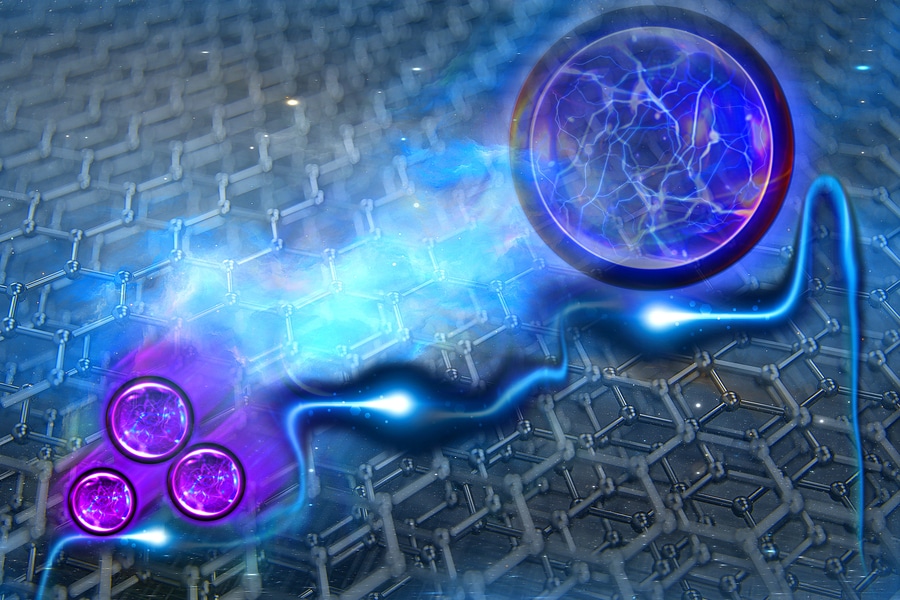MIT physicists have observed an exotic electronic state that could lead to more robust forms of quantum computing.

Electrons, the basic units of electricity, carry a single negative charge. However, in particular states of matter, they can exhibit “fractional charge,” a rare phenomenon known as the “fractional quantum Hall effect.” This exotic electronic state has been observed several times, mostly under high magnetic fields. Recently, scientists have seen this effect in a material without such robust magnetic manipulation, offering the potential for resilient quantum computers.
MIT physicists have recently observed the elusive fractional charge effect in a simpler material: five layers of graphene, an atom-thin carbon layer. By stacking five sheets of graphene-like steps on a staircase, the structure naturally allows electrons to pass through as fractions of their total charge without requiring an external magnetic field. This discovery is the first evidence of the “fractional quantum anomalous Hall effect” in crystalline graphene, a material previously not expected to exhibit this effect.
The researchers have calculated that aligning the pentalayer graphene with hexagonal boron nitride (hBN) could enhance electron interactions. Combining these materials is expected to create a moiré superlattice, an intricate atomic structure that slows down electrons in a way that mimics a magnetic field.
The researchers created two samples of the hybrid graphene structure by peeling graphene layers from a block of graphite and then using optical tools to identify five-layered flakes in a step-like configuration. They transferred the graphene flake onto a hexagonal boron nitride (hBN). They covered it with a second hBN flake before attaching electrodes to the structure and cooling it to near zero. Upon applying a current and measuring the voltage output, they observed signatures of fractional charge, where the voltage is proportional to the current multiplied by a fractional number and fundamental physics constants. Further analysis confirmed that the graphene structure exhibited the fractional quantum anomalous Hall effect, marking the first time this effect has been observed in graphene.
The group continues their research on multilayer graphene to investigate other rare electronic states.







I want to Know about this much more with the past concept of electricity and now with Ohms Law, KVL, KCL etc. in a very lucid language. Please sort me out?
Hi SOUBHIK,
Electricity Basics:
Electricity is the flow of electric charge through a conductor, like a wire. This flow of charge is what powers our devices and lights up our homes. The unit of electric charge is the coulomb (C), and the flow of charge is called current, measured in amperes (A).
Ohm’s Law:
Ohm’s Law is a fundamental principle in electricity that relates three key quantities: voltage (V), current (I), and resistance (R). It states that the current through a conductor between two points is directly proportional to the voltage across the two points and inversely proportional to the resistance between them. Mathematically, Ohm’s Law is expressed as:
V = IR
Kirchhoff’s Laws:
Kirchhoff’s Laws are two fundamental principles that govern the behavior of electrical circuits:
1. Kirchhoff’s Voltage Law (KVL): This law states that the total voltage around a closed loop in a circuit is equal to the sum of the voltage drops across the components in that loop. In other words, the sum of the voltages in a closed loop is zero.
2. Kirchhoff’s Current Law (KCL): This law states that the total current entering a junction (or node) in a circuit is equal to the total current leaving the junction. In other words, the algebraic sum of currents entering and leaving a node is zero.
For more details you can search it on You tube, textbooks or websites.
Thanks